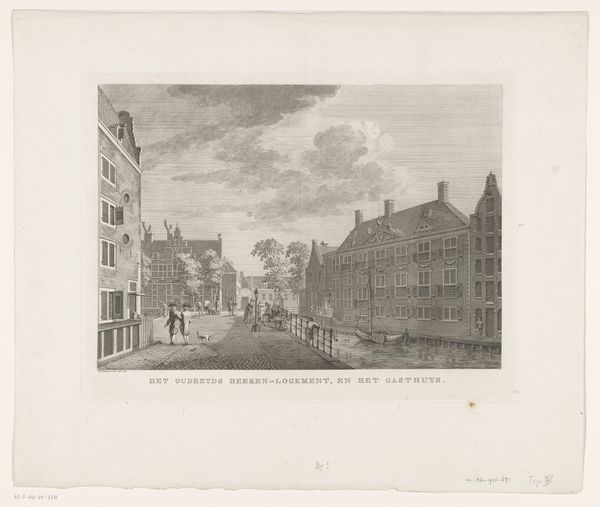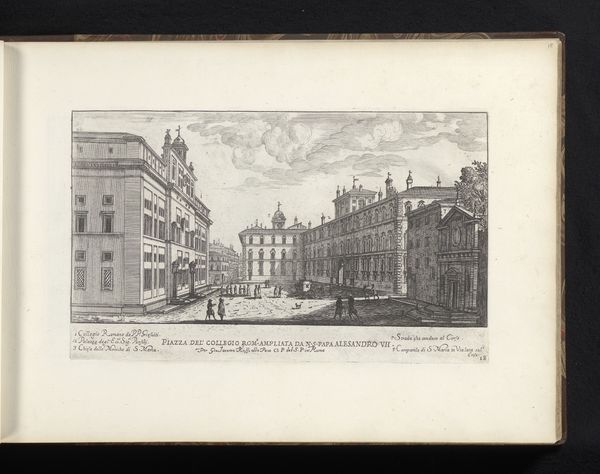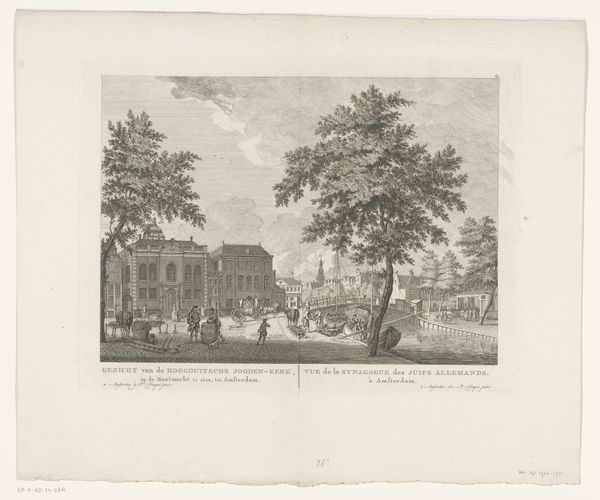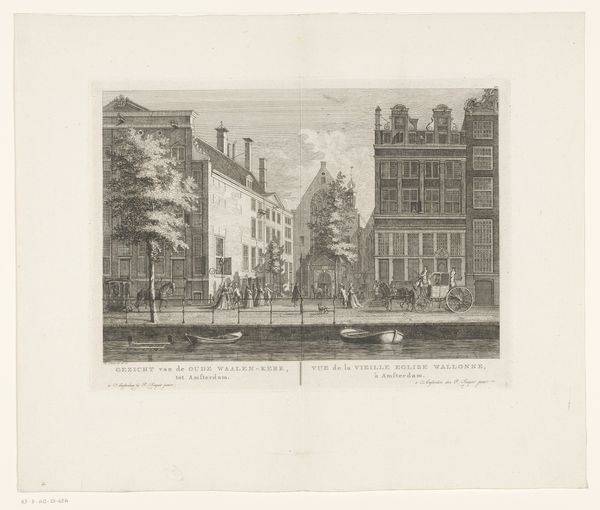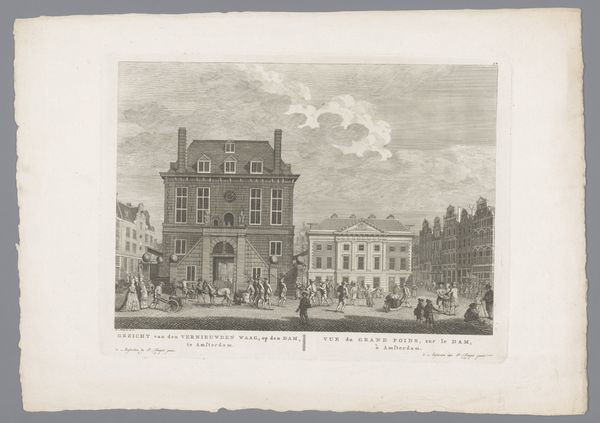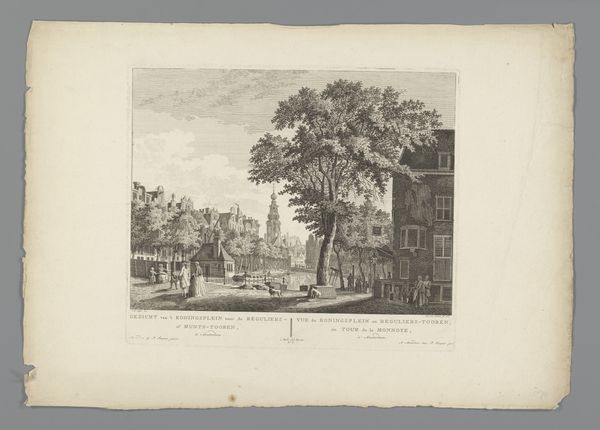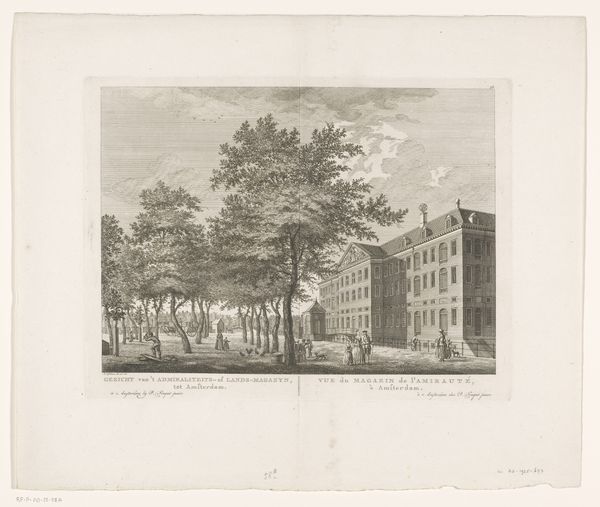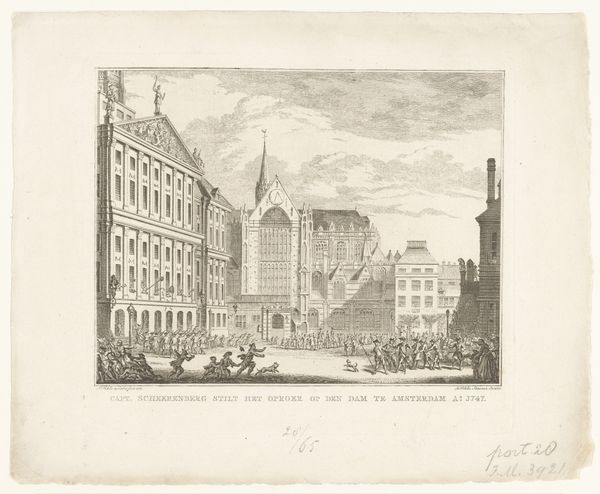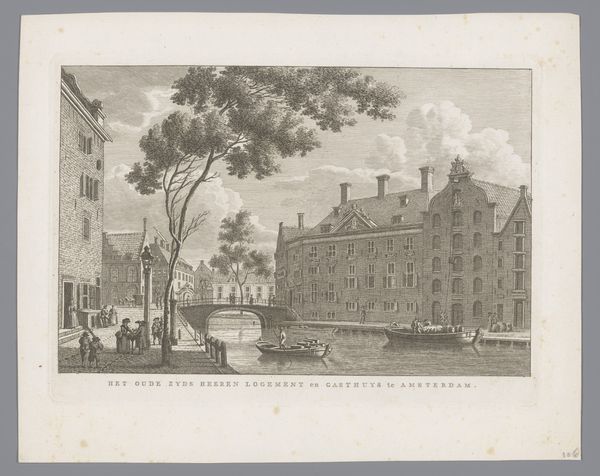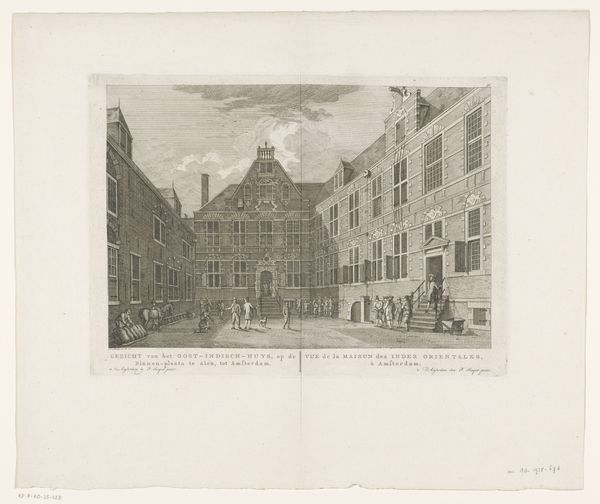
print, etching, paper, ink, engraving
#
dutch-golden-age
#
ink paper printed
#
parchment
# print
#
etching
#
light coloured
#
perspective
#
paper
#
ink
#
geometric
#
line
#
cityscape
#
engraving
Dimensions: height 285 mm, width 376 mm
Copyright: Rijks Museum: Open Domain
Curator: Ah, yes. This print captures "Gezicht op de Portugese Synagoge te Amsterdam," or "View of the Portuguese Synagogue in Amsterdam," dating roughly from 1768 to 1783, courtesy of Caspar Jacobsz Philips. It's an etching, printed in ink on paper. Editor: Immediately, I’m struck by the stillness of the scene. It’s a busy cityscape, but the monochrome palette and fine lines give it a sense of quiet, almost like a faded memory. Curator: You've picked up on something significant. Philips, working during a time when Amsterdam was a hub of cultural exchange, employs meticulous lines and careful shading. Note how he emphasizes linear perspective to give us a comprehensive view down this bustling Amsterdam street. Editor: It's a rather formal construction. Look at the geometrical arrangement of the buildings—everything adheres so strictly to those perspectival guidelines you mention. It’s a bit like observing a stage set. What about the social dynamic? Curator: See the figures populating the scene? There are carriages, people chatting, almost like incidental notes in the melody of the cityscape. Philips is subtly documenting daily life alongside this prominent landmark. The Portuguese Synagogue stands as a solid block on the right and exudes an aura of stability and integration into the community, though still distinct. Editor: It almost feels like two separate prints joined in the center, like two realities juxtaposed: the grand architecture of faith versus the mundane activities of city life. The sky, especially, has this quality; its clouds could be symbols of hope. Curator: An interesting point. Philips created a relatively accurate depiction of Amsterdam. Through the interplay of light and shadow, his work speaks of Amsterdam’s Golden Age and tolerance, providing insights into society at the time. Editor: It is so interesting how such seemingly objective viewpoints always inevitably filter an entire worldview, even a feeling... In some way, looking at this now, it creates a longing to witness and experience the pulse of Amsterdam at its prime. It speaks of trade, refuge, beauty. Curator: Yes, I find myself reflecting on Amsterdam's past every time I study Philips' art; it prompts contemplation of change, resilience, and timeless elegance.
Comments
No comments
Be the first to comment and join the conversation on the ultimate creative platform.
